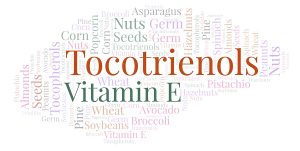The question “How can we prolong our lives?” is something that fascinates many people. It is not one thing, one activity, one diet, or one lifestyle factor that determines longevity. It is the combination of all of the things listed below that are necessary.
Longevity is partially inherited from your mother
The reason for this is that mitochondria in your body cells come from your mother’s body. As you know, the egg (ovum) contains the mitochondria (the energy packages of the cell). The sperm that is the winner penetrating the ovum is shedding the tail outside the ovum. The tail of the sperm had loads of mitochondria in it to give it the energy to wiggle its way up the Fallopian tube to meet the ovum. This is the reason why we all inherit our mitochondria from our mother. If there is longevity on your mother’s side, you likely will have the longevity gene as well. So, this certainly helps, but on the other hand, we cannot pick our ancestors! Don’t be discouraged! There is enough that you can do.
Diet
The best type of diet is a Mediterranean-type diet. There is a new fasting mimicking diet, that likely turns on latent longevity genes that need to be intermittently activated, if we are serious about wanting to increase longevity. Dr. Longo is the inventor of the fasting mimicking diet. I have discussed this in detail here. Briefly, it consists of eating 500 to 600 calories on 5 consecutive days. The rest of the month you eat normally. The important part is that Dr. Longo has shown in humans that telomeres get elongated by the 5-day protocol per month. Longer telomeres means longer life. This is what we want, because this adds life to our life expectancy!
Lifestyle
Don’t smoke and don’t do drugs. Drugs interfere with our hormone- and other cell surface receptors. Our body cells don’t like artificial chemicals from outside. Don’t overlook the fact, that alcohol is also a drug! Alcohol is a nerve and cell poison. It has been shown to even be toxic, so don’t drink all the time. If you want a drink here and there, you probably get away with it. But binge drinkers (6 drinks or more in one evening) are out of luck; their life expectancy is shorter than that of non-drinkers.
Exercise
Regular exercise recharges your mitochondria to give you extra energy. It conditions your heart and lungs and also your muscles. Many people think exercise would cause weight loss. But it is not leading to that much weight loss at all! What is more important is the fact that it is reducing the overall mortality from many diseases by up to 47%! Exercise also improves blood sugar control, energy levels and sleep patterns. There are also hidden benefits, as the heart is being conditioned and the lungs are improving their vital capacity from regular exercise, particularly aerobic exercises like running or using a treadmill. But muscle strength also benefits from regular exercise.
Get enough sleep
You need 7 to 8 hours of sleep, and it is best to go to sleep between 10 or 11 pm. During your sleep your brain is being renewed and your hormones are reloaded. There is a diurnal hormone rhythm that ensures you have enough energy for the following day. A Swedish study found that longtime shift workers had a 28% higher mortality compared to a control group of daytime workers: Shift work and mortality.
Vitamins and supplements
Some minimum vitamin and mineral supplements are helpful for longevity: Mornings: 2 capsules of molecularly distilled fish oil (omega-3 fatty acids). Two tablets of vitamin C 500 mg chewable, one capsule of 150mg of chelated magnesium, resveratrol 500mg, vitamin B complex B-50, zinc 30mg, vitamin K2 two capsules of 100 micrograms, vitamin D3 5000IU every morning, CoQ-10 400mg. Evenings: 2 capsules of molecularly distilled fish oil (omega-3 fatty acids). Vitamin B complex B-50, chelated magnesium 150mg, melatonin 3mg to fall asleep, valerian root 500mg capsule (if you have anxious thoughts); you may repeat melatonin and valerian root in the middle of the night, if you wake up at 2AM or 3AM in the morning.
Brief explanation for vitamin and mineral replacement
In case you wonder about the rationale of my suggestion for vitamin and mineral replacement, here is a brief explanation: vitamin C stimulates the adrenal glands and helps support the immune system. You get more energy and get fewer infections. Molecularly distilled fish oil is anti-inflammatory, helps prevent osteoporosis, but also prevents heart attacks by preventing inflammation of the arteries. Magnesium and zinc are co-factors in hundreds of biochemical reactions inside our cells, so this helps your metabolism.
Resveratrol an anti-aging supplement
Resveratrol is a bioflavonoid derived from red grapes. It has multiple beneficial effects. It lowers blood pressure, helps to control diabetes better and prevents osteoporosis. But resveratrol also elongates telomeres, which translated into a longer life and less diseases. B complex vitamins are good for energy and many metabolic processes. Vitamin K2 and vitamin D3 work together to get calcium out of our arteries and deposit calcium into our bones. This prevents osteoporosis, which is particularly important for postmenopausal women, but is also important for men. Resveratrol also prevents heart attacks and strokes. CoQ-10 is important to lower cholesterol, but also supports the metabolism of mitochondria, the energy packages of our cells.
Hormone deficiencies
We all know that there is menopause for women and andropause for men. But there are silent hormone deficiencies that are less well known. For instance melatonin secretion gets reduced fairly quickly after the age of 20. Between the age of 50 and 60 you are basically deficient for melatonin, so using a supplement of melatonin tablets would be very reasonable. Another hormone, namely human growth hormone (HGH) is very likely deficient in us by the time we are 50 to 60 years old. I will deal with this further below.
Menopause
Women get into menopause between 45 and 55, but they can get there earlier or later. Women are missing estrogen and progesterone. Many women were horrified by the Women’s Health Initiative result in 2002. But this trial involved synthetic hormones that the body did not like. So women got breast cancer, colon cancer, heart attacks and strokes from Premarin and Provera, both synthetic hormones. Had physicians been sensible and put them on bioidentical hormones instead, they would have prevented heart attacks, strokes and osteoporosis. They would also have prevented breast cancer and colon cancer. The proper way to replace missing hormones in women with menopause is to replace them with bioidentical progesterone cream and bioidentical estrogen cream.
Andropause
Men get into andropause between 55 and 65. The testicles will no longer provide the man with enough testosterone. This leads to lack of sex drive, erectile dysfunction, but also to more heart attacks, muscle weakness and a lack of energy. The problem is that there is not enough testosterone to stimulate the mitochondria. Mitochondria are very prominent in the heart muscle, skeletal muscles, but also in the brain. When the doctor confirms a lack of testosterone with blood tests, he orders replacement with bioidentical testosterone cream or by a simple testosterone injection twice per week. The man will feel better after a short period of time (4 to 6 weeks) as all his functions return back to normal.
Many speakers at anti-aging conferences, which I attend every December in Las Vegas, seem to agree that bioidentical hormone replacement adds 10 to 15 years of life both in men and women. It also gives people renewed energy, and they look younger.
Human growth hormone
Many people do not know that human growth hormone (HGH) is important for longevity in adults. In childhood it was important for bone growth. Growth hormone deficiency is the one factor that has been underestimated. The discussion of dwarfs in comparison to their healthy brothers and sisters showed us the following. Growth hormone production can add between 19 and 34 years (average 26.5 years) of life. Dr. Hertoghe, an endocrinologist from Belgium has done blood tests (IGF-1) and lately also 24-hour urine metabolite tests of growth hormone on aging patients and found that many were deficient with regard to HGH production. These were patients where Dr. Hertoghe already replaced their thyroid hormones, if abnormal and replaced their sex hormones when they were low.
Symptoms of human growth hormone deficiency
But they lost hair, developed old looking faces with wrinkles. In addition, a loss of subcutaneous fatty tissue is giving the face a hollow appearance. They also had muscle and joint pains and thin skin, particularly over the back of their hands.
Replacement of growth hormone
He replaced their missing HGH using daily HGH self-injection with a tiny needle (similar to diabetes injections). Within 1.5 to 3 years the wrinkles disappeared, the faces started to look younger and patients did feel younger. Their muscle and joint pains had disappeared and their hair grew back. The dosage range is between 0.1mg and 0.3mg, a tiny amount of HGH daily. This is not inexpensive, but some health care plans pay for this, as a lack of HGH is a true hormone deficiency.
Conclusion
I have given you an overview of the important elements of what increases longevity. The key is to have a healthy, balanced diet and leave junk food out. Don’t smoke and don’t drink excessive amounts of alcohol. No alcohol consumption would be best, because alcohol essentially is a nerve poison and can lead to dementia. Exercise regularly to lower mortality and strengthen your heart and lungs. Get enough rest and sleep to refresh your diurnal hormone rhythm. When we age, it is important to keep an eye on our hormones. You need a physician who is knowledgeable about it.
Hormone replacement
Hormones that are missing need to be replaced by bioidentical hormones. In addition you need to know what the level of IGF-1 is. HGH controls the IGF-1 level. If IGF-1 is low, you need HGH replacement. Studies have shown that replacement of missing HGH may be able to add 2 decades of good life. All of the other hormones replaced by bioidentical hormones will add 10 to 15 years. As stated in the beginning, there is not one thing only that increases longevity, but a combination of all these factors.
First published here: https://www.quora.com/What-increases-longevity/answer/Ray-Schilling















